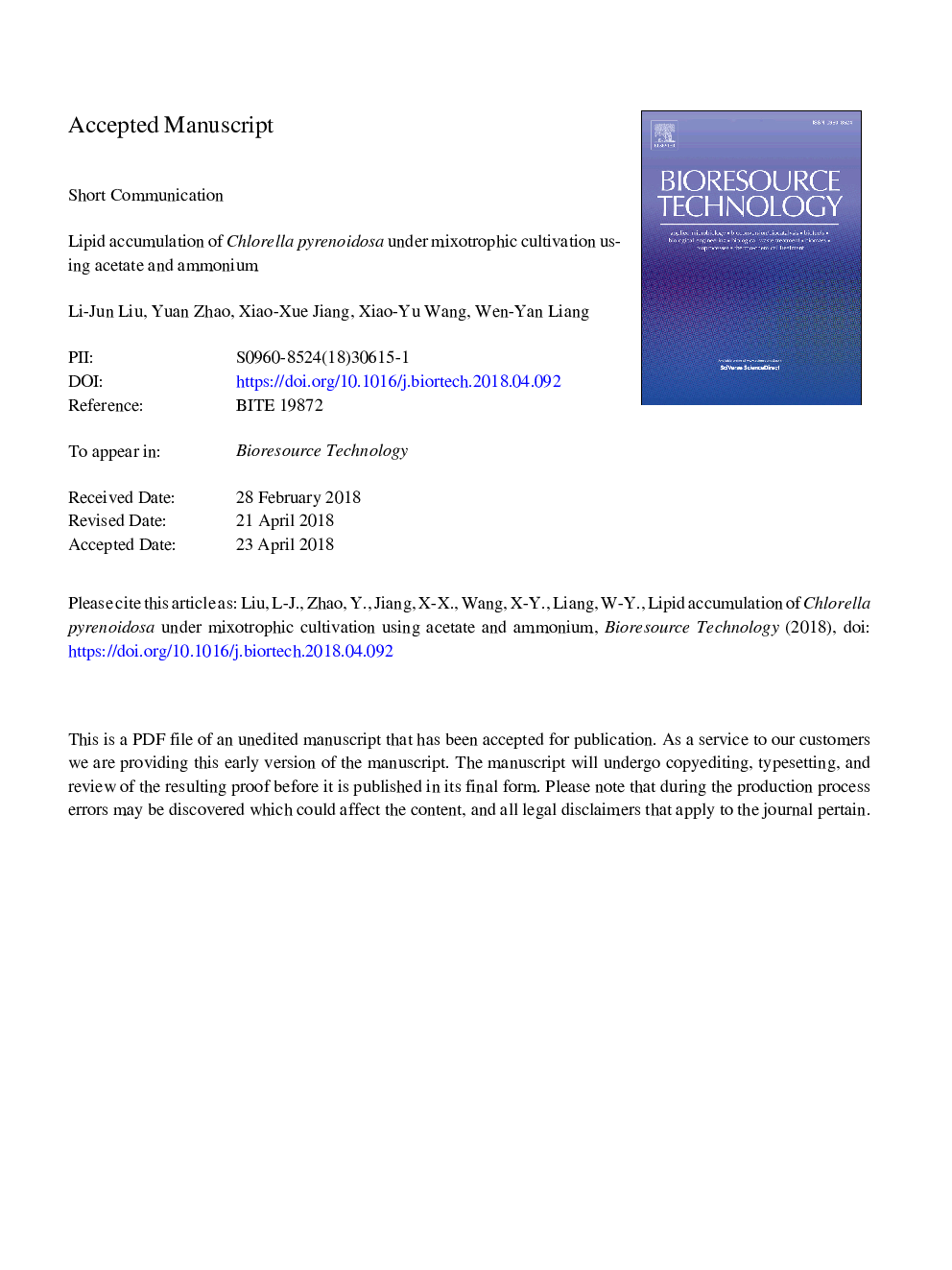| Article ID | Journal | Published Year | Pages | File Type |
|---|---|---|---|---|
| 7066946 | Bioresource Technology | 2018 | 17 Pages |
Abstract
Acetate and ammonium were used as organic carbon and nitrogen sources, respectively, during mixotrophic cultivation of Chlorella pyrenoidosa. Cell growth, content of neutral lipid (NL), productivity of biomass and total lipid, and fatty acid profiles were investigated. Results showed that C. pyrenoidosa could endure high concentrations of NH4+-N (100-200â¯mg/L) and immediately entered logarithmic growth, when the culture media contained 2.0-10.0â¯g/L NaAc. The 2.0-10.0â¯g/L NaAc in the media also resulted in the NL content of 1.87-3.05â¯mg/109cells, much higher than 0.5â¯mg/109cells of the controls. The maximum productivities of biomass and total lipid were achieved under 50 and 10â¯mg/L NH4+-N respectively when the 2.0â¯g/L NaAc was dosed. The fatty acids were mainly composed of C16:0, C16:1, C18:0, and C18:1 under the mixotrophic cultivation, with the higher saturation compared to the controls.
Related Topics
Physical Sciences and Engineering
Chemical Engineering
Process Chemistry and Technology
Authors
Lijun Liu, Yuan Zhao, Xiaoxue Jiang, Xiaoyu Wang, Wenyan Liang,
